Cuttlefish are perhaps less well-known than their close relatives, the squid and the octopuses. So while these cool creatures can't reach the whopping sizes of a giant squid, and haven't had Netflix programmes enthusing about them like octopuses, we think these cute, many-armed, colour-changing cephalopods deserve a bit more of the spotlight.
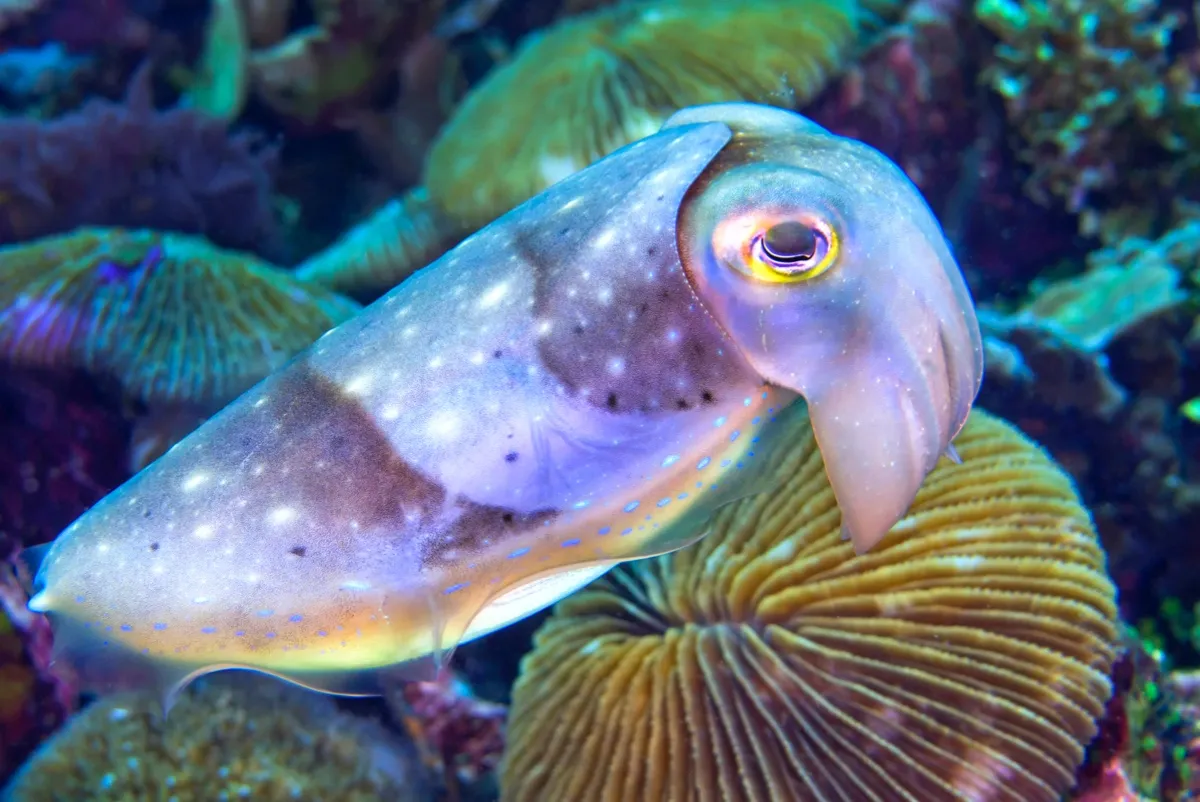
What is a cuttlefish?
Cuttlefish are molluscs, which means they are related to slugs, snails, clams and mussels. Within the mollusc phylum, cuttlefish belong to the cephalopod class, along with octopuses, squid and nautiluses.
Cuttlefish have squishy, soft bodies with 10 appendages, and an internal, gas-filled shell known as a cuttlebone, which they use to control their buoyancy. Cuttlebones are mostly comprised of a form of calcium carbonate called aragonite. You can sometimes see cuttlebones washed up on the beach.
Thanks to their high calcium content, cuttlebones are an excellent supplementary food for captive animals such as tortoises, birds and chinchillas. We don’t recommend snacking on one yourself –they’re very chalky and unpleasant.
How many species of cuttlefish are there?
There are more than 120 species of cuttlefish, and all of them live in the sea. You do not get freshwater cuttlefish.
Where do cuttlefish live?
Cuttlefish exist in tropical and temperate waters, at shallow depths of less than 600 metres. They live in rocky reefs, seabeds and seagrass meadows around the coasts of Europe, the Mediterranean, Africa, Asia and Australia, but there are relatively few species in the Americas.
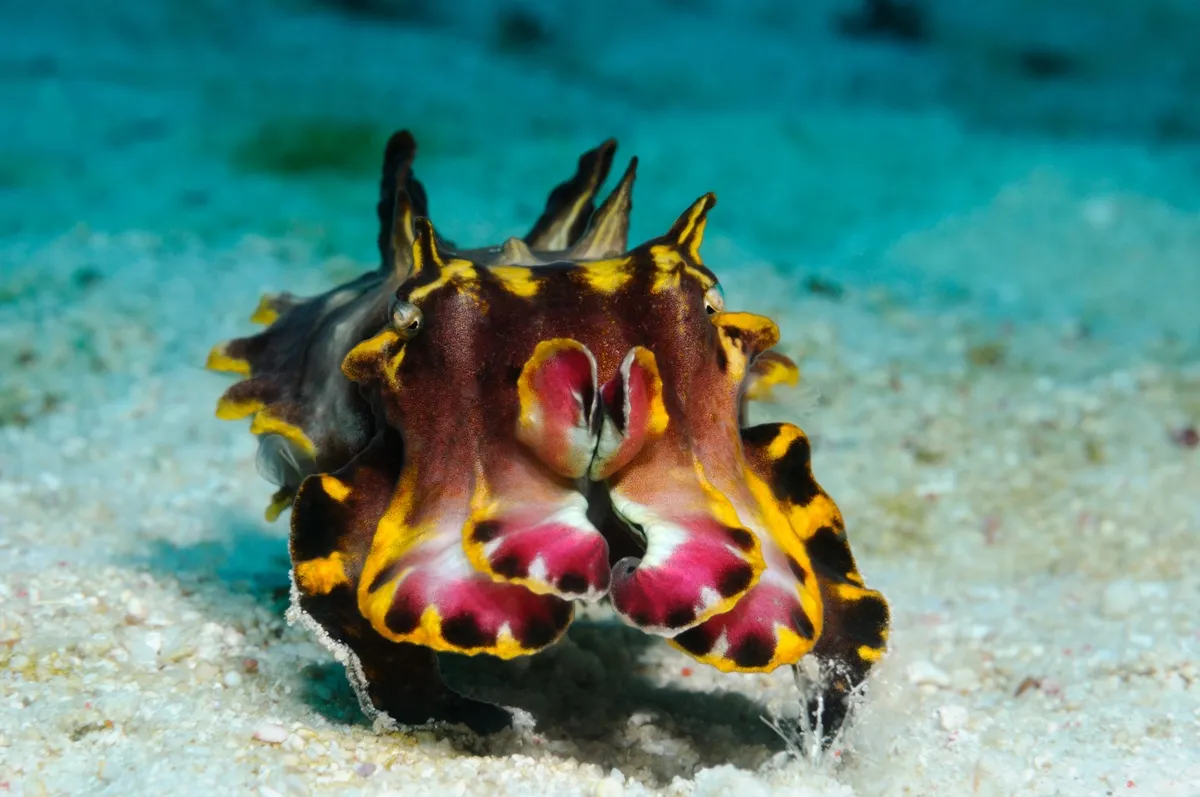
How smart are cuttlefish?
Pretty damn smart! In fact, they are among the cleverest invertebrates known to science. As well as being capable of solving mazes and puzzles, they’re able to plan and even retain their mental sharpness as they age.
For example, research published in Proceedings of the Royal Society B: Biological Sciences in 2021 found that memory in cuttlefish does not decline with age, unlike in humans.
“Cuttlefish can remember what they ate, where and when, and use this to guide their feeding decisions in the future. What’s surprising is that they don’t lose this ability with age, despite showing other signs of ageing like loss of muscle function and appetite,” said Dr Alexandra Schnell, first author of the paper.
Read more about cephalopods:
- Octopuses have sleep stages like humans, and may even dream
- How do squid survive extreme water pressure in the deep sea?
- Scientists give cuttlefish 3D glasses to test their eyesight
In another study, researchers found that cuttlefish have self-control. When presented with the option of eating a raw king prawn immediately or a grass shrimp (their preferred food) after a short delay, the marine molluscs chose the latter option. This demonstrates that cuttlefish can delay gratification in a similar way to large-brained vertebrates like chimpanzees. It’s the first time this behaviour has been seen in an invertebrate.
“The ability to exert self-control is an important element of the ability to plan for the future, which is quite a sophisticated behaviour,” said Prof Nicola Clayton, senior author of the report.
“Self-control requires an understanding that ‘less is sometimes more’ – that avoiding temptation now might lead to a better future outcome. This is a critically important building block for the evolution of complex decision-making.”
Cephalopods are thought to be the smartest invertebrates, thanks to their large brain-to-body mass ratio and complex nervous system, and they could help us to understand the evolution of intelligence throughout the animal kingdom.
One theory regarding why cephalopods evolved to be so intelligent is that the loss of their shells made them more vulnerable to predators, so they had to learn how to hide and exploit challenging niches.
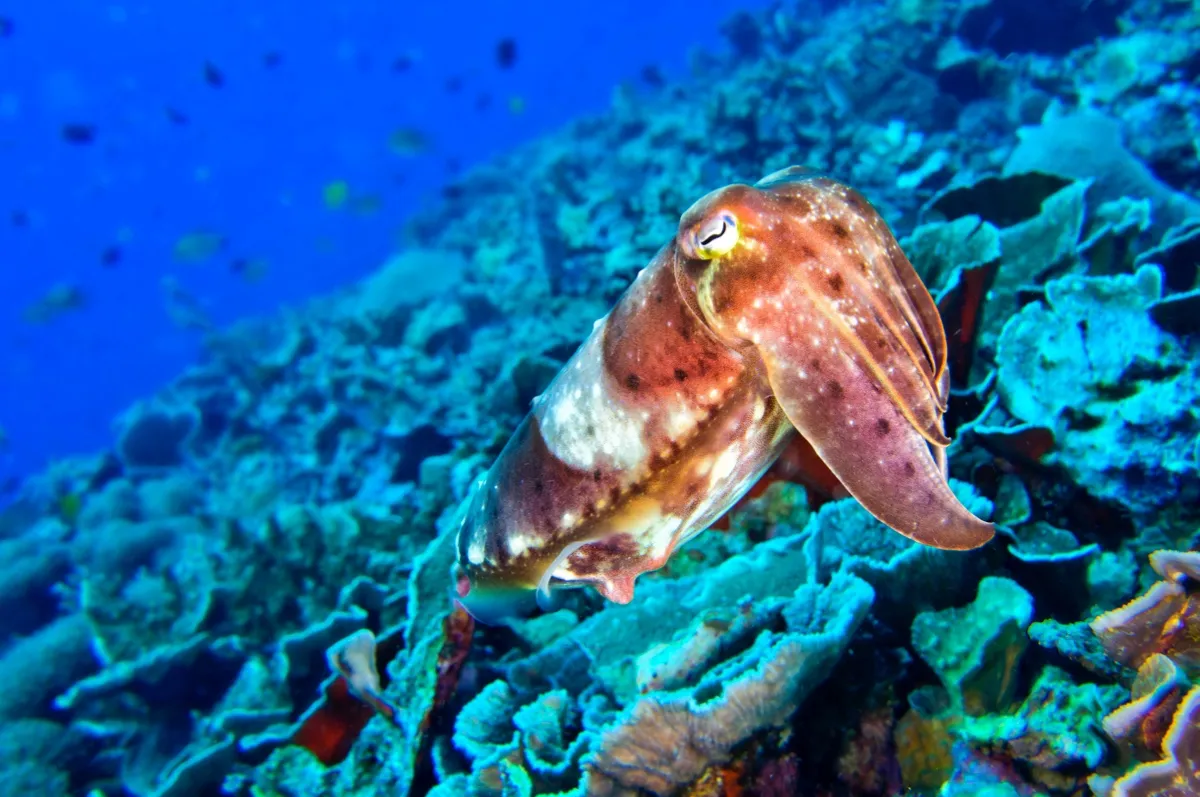
What do cuttlefish eat?
Cuttlefish are fast, intelligent predators with excellent eyesight, which allows them to hunt for crustaceans such as shrimp and crabs. They use their impressive camouflage to sneak up on the prey, then shoot out their two feeding tentacles to grab the unfortunate animal, before munching it up with their sharp beak.
How many tentacles do cuttlefish have?
Just two. The other eight appendages are arms. The two tentacles are longer, with a widened area on the end with a cluster of suckers – these are used for grabbing and gripping prey. The arms have suckers all the way along them. The suckers may even allow the cuttlefish to taste the water and the substrate, so they can gain information about their surroundings.
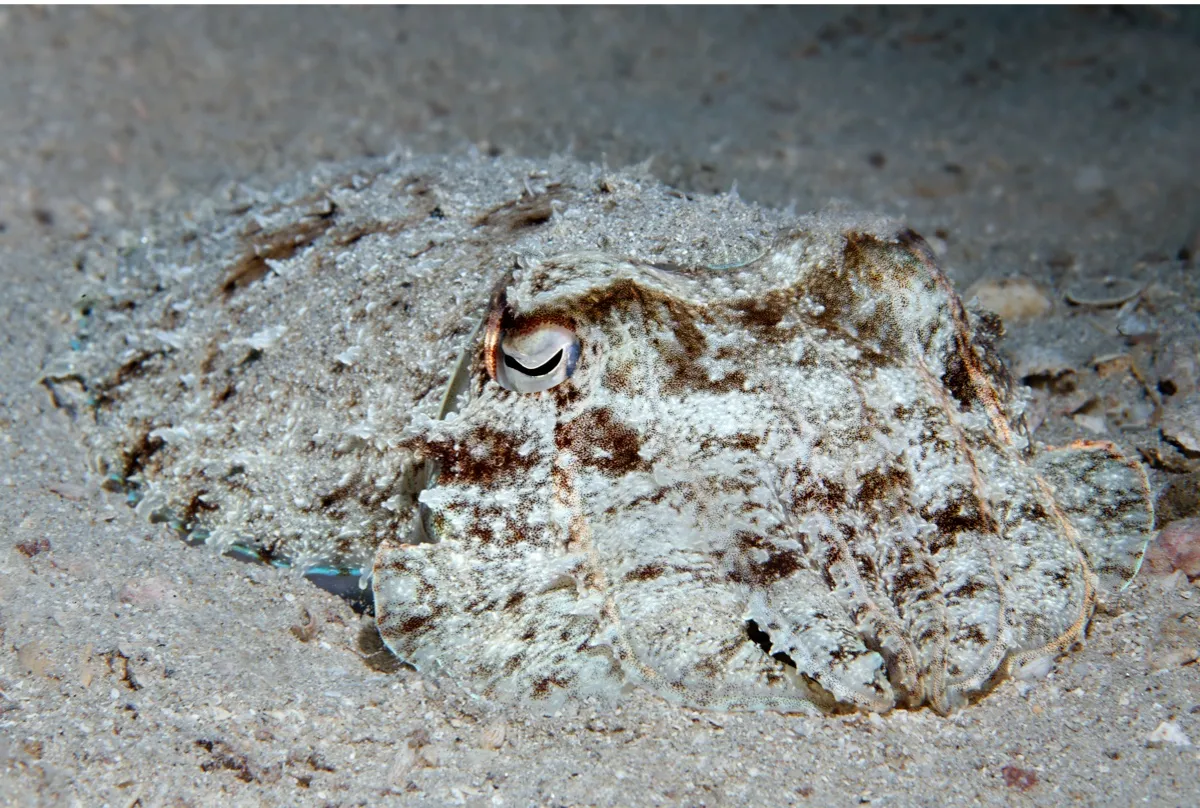
How do cuttlefish change colour?
The ability of a cuttlefish to instantly transform the colour, reflectiveness and texture of their body is truly remarkable; chameleons should hang their heads in shame. They use their colours to communicate, to scare off predators and for camouflage.
Within their skin they have tiny cells called chromatophores, surrounded by radial muscles that are controlled by neurons. The chromatophores come in several colours – a bit like pixels – and cuttlefish adjust the size of the chromatophores using their radial muscles, allowing them to change their colour and tweak their reflectiveness.
Tiny bumps on their skin called ‘papillae’ can be projected out or retracted in to adjust their texture, allowing the cuttlefish to further match their surroundings.
How long do cuttlefish live?
Cephalopods could be considered the rockstars of the sea, adopting a ‘live fast, die young’ approach. Like most cephalopods, cuttlefish live for just a year or two, and will die after the breeding season.
What is the biggest cuttlefish?
The biggest cuttlefish is the Australian giant cuttlefish, which lives in temperate and subtropical waters around Australia to a depth of 100 metres. Their mantle length (so that’s the main ‘body’ of the cuttlefish, excluding the appendages) can reach up to 50cm, and they tip the scales at more than 10kg.
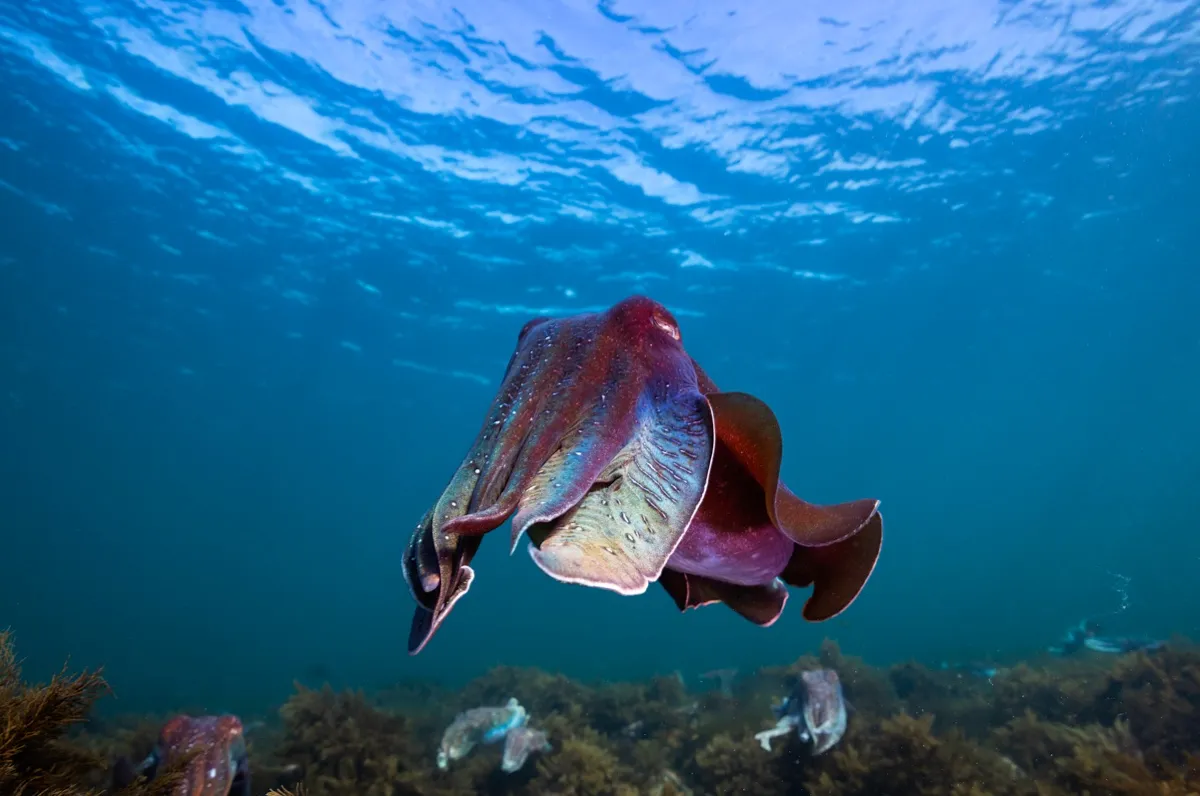
Do cuttlefish squirt ink?
Just like their octopus and squid cousins, cuttlefish can squirt ink from their ink sacs to disorientate predators. The colour of the ink can vary slightly, with octopus ink tending to be black, squid ink being blue-black, and cuttlefish ink being brown. In fact, the brown-coloured ‘sepia’ inks and paints used by artists derive their name from the ink produced by the common cuttlefish, Sepia.
Cuttlefish ink contains a number of chemicals, but is mainly comprised of melanin and mucus. While it mostly functions as a ‘smoke screen’, there is some evidence that it may irritate or numb the senses of predators. It can even alert other cephalopods that there is something scary in the area.
Read more about the oceans:
- 11 dazzling images of the UK's vibrant ocean wildlife
- Underwater pharmacy: Meet the scientists raiding the ocean's medicine cabinet
- Is it true that the Pacific and Atlantic Oceans don't mix?
What eats cuttlefish?
Cuttlefish predators include seals, dolphins, fish, seabirds and even other cuttlefish! While cuttlefish might appear to be a soft and squishy morsel for a predator, they do have a few defensive tricks up their sleeves. As well as their fascinating colour-changing abilities that allow them to blend in with their surroundings, they can also fill their mantle cavity with water and quickly expel it from their siphon to propel themselves away from a predator. And then, of course, there's the aforementioned ink attack.
Incredibly, cuttlefish have an innate ability to recognise predators, even when still in the egg. Research published in 2020 revealed that cuttlefish embryos appeared to ‘freeze’ when exposed to visual or chemical cues that suggested a predator was nearby.
What’s the difference between a squid and a cuttlefish?
We get it, at first glance these two groups of animals look pretty similar. Of course, you could cut one open and look to see if there was a cuttlebone inside, but that wouldn’t be very nice, would it?
If you see one in the water, take a peek at their eyes: squid have round pupils whereas cuttlefish have W-shaped ones. Cuttlefish also have a floaty fin around their bodies, which helps them to move. Squid are a faster-moving predator so are more streamlined and torpedo-shaped, whereas cuttlefish are a bit slower and chubbier. A cuddle-fish, if you like.
Finally, cuttlefish tend to hang out in shallower water closer to the beach, while squid will venture into the deeper ocean.
Just to confuse matters, there are also bobtail squid. These are closely related to cuttlefish and have the same floaty fin around their body, but they lack a cuttlebone. And they are INCREDIBLY cute.
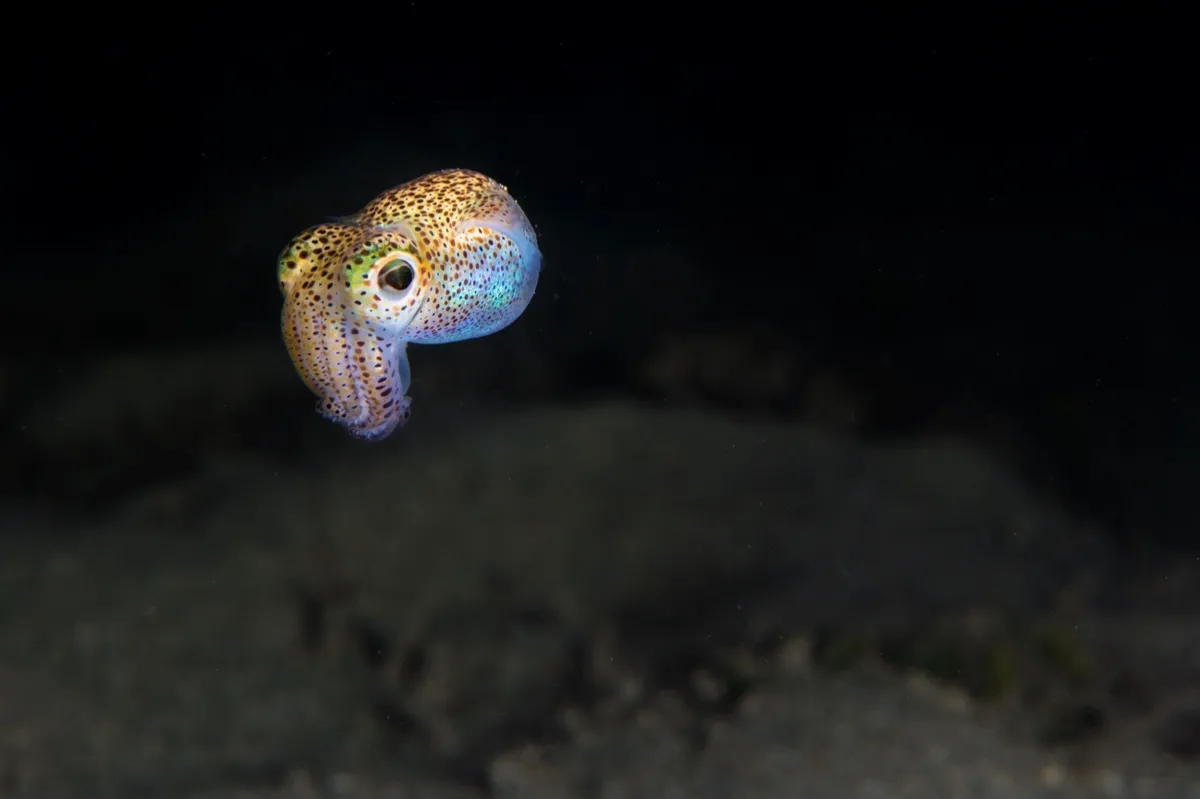
Are cuttlefish endangered?
Data for the majority of cuttlefish species is not known. According to the IUCN Red List, just one species, the giant Australian cuttlefish, is near threatened.
While we don’t tend to eat cuttlefish in the UK (instead preferring to munch on deep-fried crispy squid, aka calamari), in Mediterranean and Asian cuisines they are a delicacy. Still, according to the Marine Conservation Society’s Good Fish Guide, there are no ‘best choice’ options for sustainability when it comes to common cuttlefish, and improvements are needed in fishing methods.
Just like many other marine species, cuttlefish are vulnerable to the effects of climate change, as well as ocean acidification, habitat loss and pollution.
